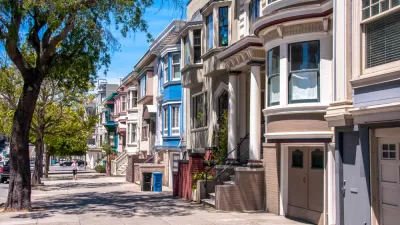A pair of interactive maps and a report compare access to opportunity in two very different neighborhoods. In both places, residents confront "friction of distance" and feel their input on public decision-making is limited.

Rachel Kaufman covers a pair of interactive maps and a report from the UNC Center for Community Capital and JPMorgan Chase that tease out the "zip code effect" on access to economic opportunity. "The purpose of the report, as its authors said, was to 'shed light on which aspects of access to opportunity are universal — i.e. seem to be present regardless of setting — and which are more a matter of local particularities.'"
The project looks at two neighborhoods, Columbia Parc in New Orleans, and Protrero Terrace and Annex in San Francisco, with very divergent socio-economic contexts. Despite the latter's position in a wealthy area, Kaufman writes, "residents still struggle: no bus line serves Protrero Annex, and the lines serving the Terrace have been cut over time. The nearest bank and credit union branches are more than a mile away, so residents end up using local ATMs (and paying the associated fees) or check-cashing stores."
Residents of Columbia Parc face similar challenges. One lesson: the "friction of distance" that residents perceive between two points matters more than the distance in miles. And without adequate information and awareness, social networks, and cultural competency from service providers, even neighborhoods in wealthy regions can become isolated from economic drivers and political processes that affect them.
FULL STORY: New Maps Show Access to Opportunity Isn’t Just Physical

Alabama: Trump Terminates Settlements for Black Communities Harmed By Raw Sewage
Trump deemed the landmark civil rights agreement “illegal DEI and environmental justice policy.”

Study: Maui’s Plan to Convert Vacation Rentals to Long-Term Housing Could Cause Nearly $1 Billion Economic Loss
The plan would reduce visitor accommodation by 25% resulting in 1,900 jobs lost.

Planetizen Federal Action Tracker
A weekly monitor of how Trump’s orders and actions are impacting planners and planning in America.

Wind Energy on the Rise Despite Federal Policy Reversal
The Trump administration is revoking federal support for renewable energy, but demand for new projects continues unabated.

Passengers Flock to Caltrain After Electrification
The new electric trains are running faster and more reliably, leading to strong ridership growth on the Bay Area rail system.

Texas Churches Rally Behind ‘Yes in God’s Back Yard’ Legislation
Religious leaders want the state to reduce zoning regulations to streamline leasing church-owned land to housing developers.
Urban Design for Planners 1: Software Tools
This six-course series explores essential urban design concepts using open source software and equips planners with the tools they need to participate fully in the urban design process.
Planning for Universal Design
Learn the tools for implementing Universal Design in planning regulations.
Caltrans
Smith Gee Studio
Institute for Housing and Urban Development Studies (IHS)
City of Grandview
Harvard GSD Executive Education
Toledo-Lucas County Plan Commissions
Salt Lake City
NYU Wagner Graduate School of Public Service





























